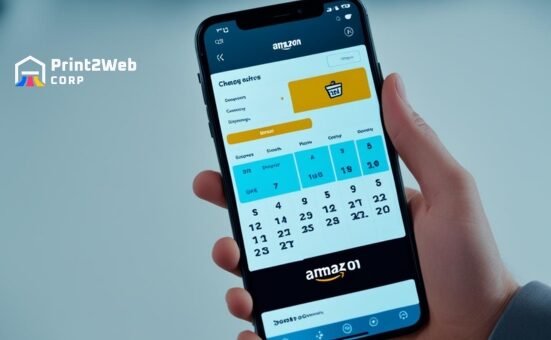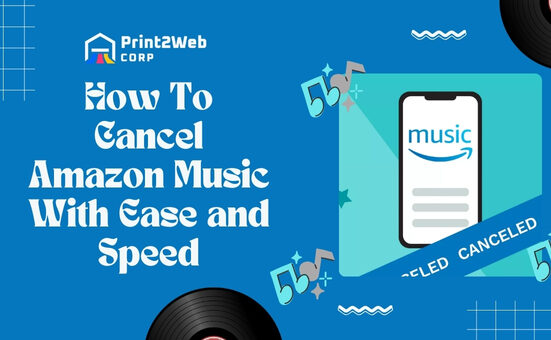The digital world buzzes with conversations, connections, and a constant exchange of ideas. As a business owner looking to leverage the power of ‘Social Media for Business’, I understand the significance of these interactions. Think about it: almost everyone’s hooked to their screens, scrolling through feeds, liking photos, and sharing moments. With that much attention in one place, can your business afford to stay away? Grabbing eyeballs amid this digital hustle is what social media mastery is all about.
Why is it crucial for businesses to have a strong social media presence? Because that’s where your audience hangs out! Imagine being able to show up right where your potential customers are chilling, ready with exactly what they want before they even ask for it. That’s the magic of being on platforms like Facebook and Instagram – you get to become part of the daily lives of millions.
What You’ll Learn From This Article:
- Simple strategies to make social media work wonders for your brand
- Real-life examples showcasing successful lead generation on Facebook
- Tips on building a loyal online community around your business
- How targeting content leads you directly into customers’ hearts (and carts)
- Influencer marketing unpacked: no fluff, just how-to
- Easy steps toward managing your online reputation like a pro
The Power of Social Media for Business
Social media has become a game-changer for businesses around the world. It’s not just about chatting with friends anymore; it’s an incredible space where companies can connect with customers and grow.

Understanding the Importance of Social Media for Business
To understand why social media is so important for business today, we need to look at how people spend their time. People are on social networks like Facebook, Instagram, and Twitter not just to talk with family but to find out about stuff they want to buy or services they need. This makes social media a powerful tool because it’s where lots of folks are at any given time, all gathered in one place, ready to hear what you’ve got to say.
Why Businesses are Turning to Social Media
Companies all over are seeing that social media platforms like Facebook, Instagram, and Twitter are where the action is. By being present on these networks, businesses can show off what they do best right where potential customers already hang out. From sharing pictures of new products on Instagram to tweeting updates about services, companies use these sites because it’s an easy way to talk right to people interested in what they offer.
Also Read: Unlock Success with Amazon Search Terms Report Insights
Harnessing Social Media for Better Lead Generation
Social media is a gold mine for finding new customers. The trick is knowing how to dig in the right spot. By sharing posts, talking to people, and showing off what makes your business unique, you can grab interest and turn followers into buyers.

The Role of Social Media in Generating Leads
Social media does more than just let people chat with friends or watch funny videos. For businesses like yours and mine, these platforms are like busy marketplaces full of folks ready to hear about what we have to offer. Here’s how social media pulls in those top-notch leads:
- Targeted Advertising: You can choose who sees your ads based on what they like, where they live, or other cool facts about them.
- Engaging Content: Share stories or pictures that show off your brand’s personality; this draws people in.
- Instant Interaction: Answer questions fast and chat right then and there. It shows that you care and keep people interested.
- Hashtag Use: Toss in some catchy hashtags related to your post – it’s how you wave a flag saying “Hey! Over here!” to folks who might want what you’re selling.
By putting these points into action every day on social media pages like Facebook or Instagram, businesses can find new leads without breaking a sweat.
Successful Lead Generation Through Facebook
Let me tell you a story about this one company that scored big-time with Facebook lead generation. They were smart cookies—they knew their audience inside out and played their cards right on social media:
- They created eye-catching posts—bright colors, bold words—stuff that makes you stop scrolling.
- Then, they used Facebook’s tools to send those posts straight to the kind of people most likely to be interested.
- They also set up special forms for those curious enough to learn more—the forms were easy-peasy-lemon-squeezy; fill out in a snap!
- Engage! They talked back whenever someone left comments, which made them feel heard.
The result? Loads more leads than before—all because they knew where their future customers hung out (on Facebook!) and dished up exactly what would get those customers knocking on their door!
Also Read: Unlock Profit Potential: Vending Machine Business Strategies
Creating a Community through Social Media
Social media isn’t just a platform for promoting products; it’s a space where brands can breathe life into their communities. Building this family of customers, clients, and supporters around your brand transforms casual browsers into devoted fans.

Foster an Online Community with Your Brand at Its Center
Creating an online community with your brand at its core is like hosting a party where everyone’s excited to see you. To do this, kick off conversations that resonate with people’s interests while tying back to your values. Share stories that reflect your brand’s journey and invite followers to chip in with their thoughts and experiences. The key here is consistency – keep showing up, keep engaging, and let the community know they’re heard.
Leveraging Instagram and LinkedIn Communities For Branding
When it comes to Instagram, use visually compelling content coupled with interactive features like polls or questions in stories to spark dialogue. Hashtags are your rally cry; create unique ones that bind the community together. Over on LinkedIn, publish thought leadership articles that establish credibility and start professional discussions around industry trends as a tool for branding.
Enhancing Your Brand Image Through Social Media
Social media is like a mirror for your brand. It’s where people look to see who you are and what you’re all about. By using social media, you can make your brand shine and leave a mark on folks’ minds.

Strategies Involved in Improving Your Branding
To boost your brand on social media, there are some smart moves you can make:
- Be You: Show the world who you are. Share stories that tell them what your business stands for.
- Listen Up: When people talk to or about your brand, listen closely and chat back. Conversations keep connections strong.
- Consistency is Key: Use similar styles and messages across different platforms so folks recognize you anywhere.
Role of Influencer Marketing in Branding & Promotion
Influencer marketing taps into the trust people have in online celebrities to give your brand a thumbs-up. These influencers can:
- Make noise for your products by just being themselves with whatever you sell.
- Spread the word quickly when they have oodles of followers listening.
Tapping into their following means more eyes on what you offer, which can mean more fans walking through the door (or clicking through to your site!).
Also Read: Private-Label Credit Card Secrets: Unlock Shopping Benefits!
Targeting Audience Correctly with Your Content Strategy
Content strategy in social media for business isn’t just about posting regularly—it’s about saying the right things to the right people at the right time. To make this happen, you need to understand who you’re speaking to and tailor your content to their interests and needs.

Finding and Engaging with the Right Audience on Different Platforms
To effectively engage with an audience on social media platforms, it is critical to identify who they are. Here are some steps that businesses can use:
- Research Demographics: Understand who uses each platform. For example, Instagram might skews toward a younger audience than Facebook.
- Use Social Listening Tools: These tools help you track what’s being said about your brand or industry, so you can hop into conversations or understand trends.
- Analyze Competitors: See who engages with competitors’ content, as they might be part of your target audience as well.
- Engage Actively: Once you find your audience, talk to them not at them – ask questions, comment back, and like their posts.
By focusing on these areas, businesses can seek out their desired demographic more efficiently and create better engagement.
Case Study: Optimal Use Of Ads To Reach Specific Audiences
In a recent case study, a health food company wanted to reach health-conscious consumers between 25-40 years old. They used specifically targeted ad campaigns on Facebook by utilizing:
- Detailed Targeting Options: They selected for interests in health foods and organic products.
- A/B Testing: They crafted several versions of ads with variations in images and copy to see which resonated most.
Through careful targeting and testing of their ads, they saw a significant increase in both engagement rates from that demographic group as well as conversions—a testament to the effectiveness of strategic ad use.
Captivating Statistics about “Social Media for Business”
In the realm of digital marketing, numbers speak louder than words, and when it comes to “Social Media for Business”, these numbers turn into a story worth paying attention to. Vast oceans of data are gathered every second from likes, shares, tweets, and posts. Diving deep into this sea reveals trends that can steer a business toward phenomenal success.

Insightful Facts About Active Users Of Major Platforms Like Facebook, Twitter, Insta etc.
Facebook takes the lead with an astounding user base; it’s like the grand festival where almost every consumer shows up. Twitter buzzes too, spreading news like wildfire with quick tweets that push the branding envelope. Then there’s Instagram – oh boy! It turns everyday visuals into compelling narratives for brands savvy enough to harness its vivid potential.
Consumer Behavior Statistics Proving Relevance Of Social Media In Purchase Decisions
Every click on social media tells a story about consumer behavior. These platforms aren’t just idle playgrounds—they’re virtual marketplaces where opinions form and buying decisions crystallize. Whether it’s products being discovered through an influencer’s story on Instagram or services being considered after a tweet reshapes someone’s perception – social media is often the unsung hero in guiding what lands in shoppers’ carts.
Also Read: Amazon Package Not Delivered? Quick Fix Solutions Here!
Frequently Asked Questions
Can social media really help grow my business?
Absolutely! Social media can significantly increase your brand’s visibility and help you connect with a much larger audience.
How often should I post on social media for effective business marketing?
For best results, aim to post consistently. Many experts recommend at least once a day on platforms like Instagram, and 3-5 times a week on Facebook.
Should I use paid advertising on social media?
Yes, paid ads can be very effective. They allow you to target specific audiences and provide valuable insights into your campaigns.
Do I need to be on every social media platform for my business?
No, target platforms where your ideal customers spend the most time. It’s better to manage one or two platforms well than spread yourself too thin.
How do I measure success with social media for my business?
Track metrics like engagement rates, follower growth, website traffic from social platforms, and conversion rates to gauge success.
Conclusion
In essence, ‘Social Media for Business’ is more than a trend; it’s an essential part of modern marketing strategies. It’s the gateway to engaging with customers on a personal level, showcasing brand identity, and adapting to ever-changing consumer behavior.
What makes social media unique and indispensable is its ability to build communities, foster relationships, and encourage loyalty — all while providing measurable results that contribute to business growth. By understanding its power and utilizing it wisely, businesses can flourish in this digital age. So here we are at the wrap-up point: adapt to survive, engage to thrive!







